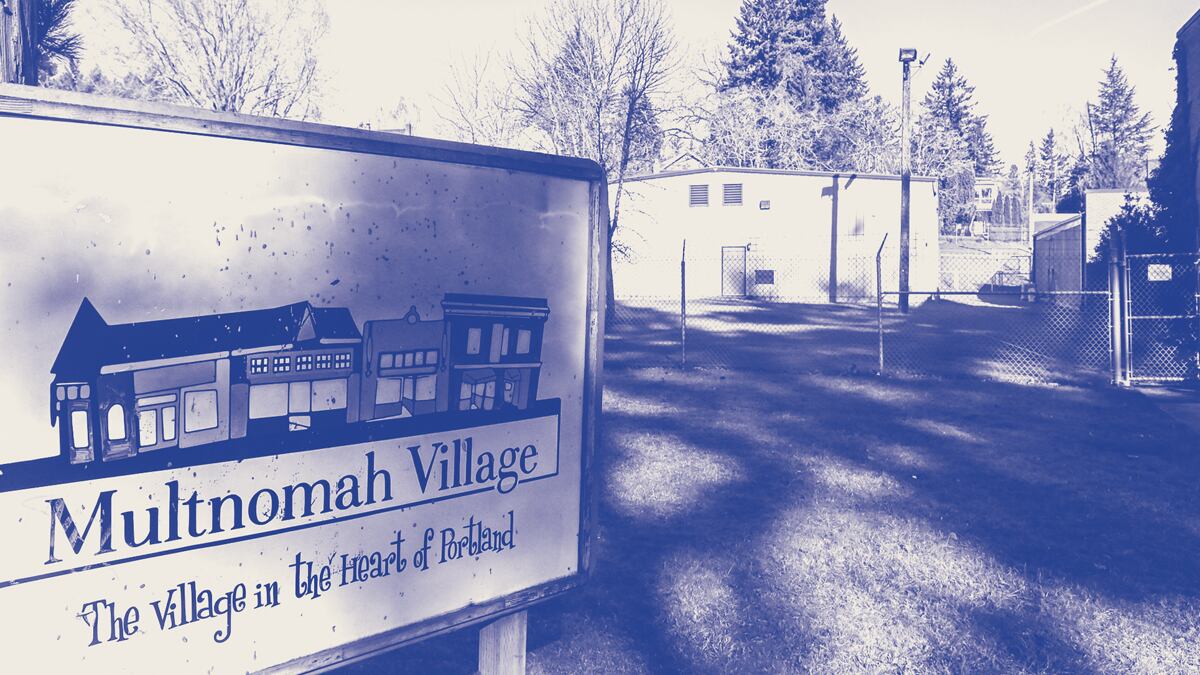It’s been eight months since City Commissioner Dan Ryan pledged to open six “safe rest villages” across the city as an alternative to street camping. In that time, his office has selected only three locations. (Last week, WW first reported that members of the Portland Public Schools board would reject Ryan’s proposal for a safe rest village at the former Whitaker School campus in Northeast Portland.) As the clock ticks on Ryan’s pledge, we examine the status of one of the three sites Ryan has selected.
Site: SFC Jerome F. Sears United States Army Reserve Center
Location: 2730 SW Multnomah Blvd. in Multnomah Village
What’s there now: The U.S. Department of Defense gave City Hall the former Army Reserve training center in 2012 for emergency management. It was used as a temporary homeless shelter in 2015 and 2016. Since then, it’s been used sparingly for first responder training and as a staging area for construction.
Status: There’s no timeline for when the site might open. Since Ryan announced it back in November, site operators have not yet been cemented, the city hasn’t obtained utility permits from its own bureaus, no sleeping pods have been purchased, and land survey work is ongoing.
Safe rest villages spokesman Bryan Aptekar says the city hasn’t yet requested permits because “we’re working on the final elements. We’re waiting on the survey work, which will give us all we need to put together the drawings, which we need for permits.”
Aptekar defends the speed of the process: “I’d say that this is not going slowly—or any more slowly than any other permit process,” and he added that “given the importance of this project for the entire city, we will get as expedited a review as possible.”
In January, the Federal Emergency Management Agency launched a review of its own to determine whether the proposal aligned with the intent of DOD’s deed. The feds tell WW no decision has been made, nor is there a timeline for it.
Who stands in the way: In addition to the slow pace of City Hall, the Multnomah Neighborhood Association has challenged the legitimacy of the site since Ryan announced it.
On Jan. 20, neighborhood association chair Moses Ross informed Ryan via email that the association board had passed a motion (which is largely symbolic) recommending that the city not open Sears and instead use the funding to increase services at the Bybee Lakes Hope Center, a shelter at the former Wapato Jail in North Portland.
“The homeless, instead of being relocated to temporary, inhumane metal boxes, should go to a facility with the full services that they desperately need to enhance their quality of life,” the email said.
Ross tells WW the vote was narrow (he supports the Sears site) and the neighborhood may have backed it if the city had spent more time explaining the plan. Instead, he says, the announcement came as a surprise: “The strategy energized those that were against it.” Ryan meets with the group this week.
Lobbying against the site has gone online, too. A handful of homeowners living near the Sears site apparently created a website, saferestvillage.com, encouraging Portlanders to contact city officials and voice their opposition. (The city project’s domain is saferestvillages.org).
“High risk ‘safe rest villages’ do not belong next to schools, parks, daycares or in your backyard,” it reads. The site asserts that “low barrier to entry” means village residents wouldn’t need to be sober or seeking treatment, could be sex offenders, or could “be explicitly recruited from communities with high rates of addiction and violence.” (Ross says the site is not representative of the entire neighborhood association, and he’s discouraged by it.)
When WW reached out to the website via email, an unidentified person responded the purpose of the website was to “offer a counterpoint”: “Neighbors are frustrated with Dan Ryan and his team’s public dishonesty.…His poor diplomacy is creating fear, distrust and anger among residents.”
The person added: “The people involved do not wish to be identified, as they expect to be threatened, intimidated or otherwise harassed over the work.”
Neighbors sent a list of more than 160 questions to Ryan’s office Jan. 20, which were reviewed by WW.
Many of the questions asked how the sites would function, how crime would be managed, and what the city would require of people who lived there. Others, Aptekar says, were clearly meant to dissuade the city from placing a site there: “Some are intended to slow us down and demoralize us.”
One representative asked: “How are immediate neighbors compensated for their loss of property value? Perhaps property taxes could be waived for the duration of the Safe Rest Village’s operation.”
One person who’d been around when the site was used as a temporary shelter five years ago wrote: “It feels like this group of neighbors has ‘done our time.’”
What Ryan says: His office is moving forward with the project.
“Our team engages in dialogue with a wide range of stakeholders to address concerns surrounding future villages,” says Margaux Weeke, a spokeswoman for Ryan. “However, organized opposition of compassionate solutions to houselessness can factor into how quickly the Safe Rest Villages team can move forward on a potential village.”
This article was published with support from the Jackson Foundation, whose mission is: “To promote the welfare of the public of the City of Portland or the State of Oregon, or both.”

